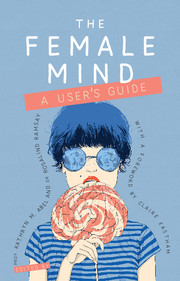Book contents
- Frontmatter
- Acknowledgements
- Contents
- Foreword
- Introduction: being female
- Part I Women in perspective
- 1 The history of the ‘female mind’
- 2 Gender-informed responses to women's distress
- 3 Female sexuality
- 4 Growing up female
- Part II Women and society
- Part III Women and their environment
- Part IV Women and specific disorders
- Part V Women and treatment
- Contributors
- Index
1 - The history of the ‘female mind’
from Part I - Women in perspective
Published online by Cambridge University Press: 02 January 2018
- Frontmatter
- Acknowledgements
- Contents
- Foreword
- Introduction: being female
- Part I Women in perspective
- 1 The history of the ‘female mind’
- 2 Gender-informed responses to women's distress
- 3 Female sexuality
- 4 Growing up female
- Part II Women and society
- Part III Women and their environment
- Part IV Women and specific disorders
- Part V Women and treatment
- Contributors
- Index
Summary
‘The great question that has never been answered, and which I have not yet been able to answer, despite my thirty years of research into the feminine soul, is “What does a woman want?”’
– Sigmund Freud (Jones, 1953)Early mythology and theology
In classical Greek mythology, Pandora was the first woman. Zeus (king of the gods) created Pandora as a curse on man, a revenge on Prometheus for stealing fire from the Gods. Hesiod (750–650 BC), the Greek poet, gave us the earliest literary account: ‘As fire's price I'll give an evil thing, which all shall cherish in their hearts, embracing their own scourge’. Pandora was given ‘a dog-like, shameless mind and thieving ways’ and, of course, her box, from which soon flowed all the evils of humanity.
In Christian theology, Eve was the first woman. Fashioned by God from Adam's rib, she was ‘man's fatal partner’ (Warner, 2001). All was happy in the garden of Eden until Eve enticed Adam into sin. After the ‘fall’ came exile, disease, mortality and hardship. From these beginnings emerge the founding myths of woman's place in Western history, told in a variety of forms: woman as original sin, created by and for man, and the weaker sex – morally, physically and psychically.
In the Middle Ages, the Summa Theologica by St Thomas Aquinas (1225–1274) was one of the most influential works of Christian philosophy. Woman were regarded as inferior to men, and the result of sin: ‘as regards the individual nature, woman is defective and misbegotten’ (Tasca et al, 2012). This text helped shape attitudes towards women and their capabilities for centuries, and its theological descriptions of woman's inferiority have been suggested as the start of a ‘misogynistic crusade’ in the late Middle Ages (Tasca et al, 2012).
Madness in the Middle Ages was either ‘good’ madness – exhibited by ‘holy innocents, prophets, ascetics, and visionaries’ (usually male) – or ‘derangement’ – seen as ‘diabolic, schemed by Satan and spread by witches and heretics’ (invariably female) (Porter, 2002). This attitude was exemplified by the witch hunts that spread through Europe, reaching their peak in the mid-17th century.
- Type
- Chapter
- Information
- The Female MindUser's Guide, pp. 3 - 13Publisher: Royal College of PsychiatristsPrint publication year: 2017



